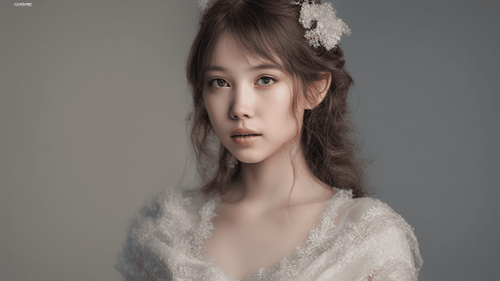
Introduction
In today's rapidly evolving technological landscape, Artificial Intelligence (AI) continues to redefine possibilities across various industries. One such groundbreaking application is the AI that completes images, a remarkable advancement that has transformed the way we approach creativity and visual content generation. From aiding artists and designers to streamlining workflows in various sectors, AI-driven image completion is a game-changer that warrants a closer look.
AI That Completes Images: Redefining Creativity
Understanding AI Image Completion
AI image completion is a process where artificial intelligence algorithms analyze and predict missing or incomplete portions of an image based on existing visual cues. Leveraging deep learning techniques and neural networks, these algorithms can seamlessly fill in gaps and generate realistic, high-quality visuals that blend seamlessly with the original content.
The Creative Potential Unleashed
AI that completes images opens up a realm of creative possibilities. Artists and designers can harness this technology to quickly generate drafts, explore multiple design variations, and experiment with new concepts. The ability to effortlessly fill in missing elements empowers creators to focus on refining their ideas rather than getting bogged down by technical intricacies.
Applications Across Industries
The influence of AI-powered image completion extends across diverse industries:
-
Digital Artistry: Visual artists can use AI to transform rough sketches into polished artworks, expediting the creative process and enabling them to explore unconventional concepts.
-
Design and Advertising: Designers can enhance their mock-ups and prototypes with realistic visuals, enabling clients to visualize the final product more effectively.
-
Film and Animation: AI can assist in generating intricate background elements and accelerating the animation process.
-
Gaming: Game developers can create immersive environments by swiftly generating complex textures and landscapes.
-
Architecture: Architects can visualize their designs with greater realism by completing building renderings with AI.
Advantages of AI That Completes Images
Enhanced Efficiency and Productivity
AI-driven image completion significantly reduces the time and effort required to finalize visuals. Designers and artists can iterate quickly, experimenting with various ideas without being hindered by the need to meticulously craft every detail.
Seamless Integration with Workflows
AI complements existing workflows seamlessly. It adapts to different software and tools, making it a versatile addition to any creative process.
Quality Enhancement
The AI's ability to generate lifelike images ensures a consistent level of quality, reducing the risk of inconsistencies that can arise from manual completion.
Creative Exploration
Artists can push boundaries and explore unconventional concepts without being constrained by technical limitations. AI serves as a collaborator, aiding in translating imagination into visual reality.
Time-Saving in Commercial Projects
In commercial settings, AI-driven image completion can accelerate project timelines, allowing businesses to deliver high-quality visuals to clients within shorter timeframes.
The Inner Workings of AI Image Completion
Neural Networks: The Building Blocks
At the heart of AI image completion are neural networks, intricate systems inspired by the human brain's information processing. These networks consist of layers of interconnected nodes that process and analyze data, enabling the AI to recognize patterns, learn from examples, and generate coherent image completions.
Training the Model
To achieve accurate image completion, the AI model undergoes extensive training. It's fed a vast dataset of images and their corresponding completed versions. Through countless iterations, the model learns to predict missing elements based on contextual information present in the images.
Generating Realistic Completions
During the completion process, the AI evaluates nearby pixels, textures, and shapes to generate realistic and contextually appropriate additions to the image. The result is a visually coherent composition that aligns seamlessly with the original content.
The Ethical Landscape and Future Implications
Ethical Considerations
While AI that completes images offers remarkable advantages, it also raises ethical questions. Concerns regarding copyright, intellectual property, and potential misuse of generated content are pertinent. Striking a balance between creative empowerment and ethical responsibility is essential.
Future Innovations
The field of AI image completion is poised for continuous evolution. As algorithms become more sophisticated, we can anticipate even more accurate and contextually nuanced image completions. The creative landscape is set to transform further as AI becomes an indispensable tool for artists and creators.
Collaboration, Not Replacement
It's important to note that AI complements human creativity rather than replacing it. The symbiotic relationship between AI and human imagination results in a harmonious fusion of technology and artistic expression.
FAQs About AI That Completes Images
How Does AI Image Completion Work?
AI image completion relies on neural networks and deep learning algorithms to analyze existing visual data and predict missing image elements, producing seamless and realistic completions.
Can AI Creativity Replace Human Creativity?
No, AI enhances human creativity by expediting processes and offering novel insights, but it cannot replicate the depth and nuances of human imagination and emotional connection to art.
Is AI Image Completion Accessible to Non-Tech-Savvy Individuals?
Yes, many user-friendly tools and software incorporate AI image completion, making it accessible to individuals without extensive technical knowledge.
What Are the Legal Implications of AI-Generated Art?
The legal framework surrounding AI-generated art is complex, encompassing copyright, ownership, and attribution. It's a topic that requires careful consideration as AI's role in creative processes expands.
Can AI Image Completion Be Customized?
Absolutely, AI image completion can be fine-tuned to align with specific preferences and stylistic choices, offering a high degree of customization.
How Secure Is AI-Completed Content?
AI-generated content is as secure as the platforms and systems hosting it. Implementing robust security measures is essential to safeguarding AI-completed visuals.
Conclusion
AI that completes images marks a paradigm shift in creative expression and content generation. By seamlessly predicting and generating missing visual elements, AI empowers artists, designers, and creators across industries to innovate and explore with unparalleled efficiency. While ethical considerations remain, the collaborative relationship between AI and human ingenuity promises a future where technology augments and elevates our creative endeavors. As AI continues to evolve, it's clear that the canvas of imagination has expanded, inviting us to unlock new dimensions of artistic achievement with every completed image.